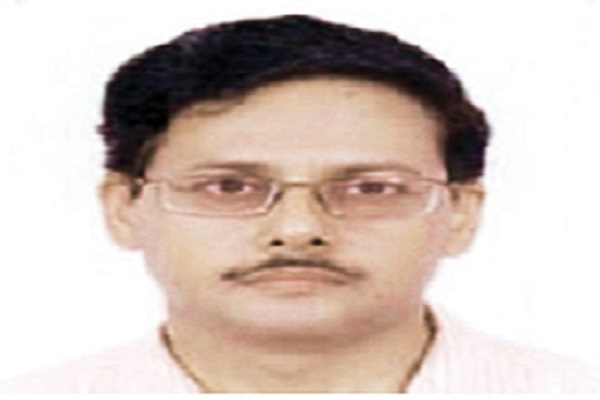
Capacity building of employees and minor changes in working style will go a long way towards ensuring effective e-Governance in the Union Territory, says Chandraker Bharti, in an interview with Nirav Soni of ENN
Provide a brief about your department and its functioning.
The Directorate of Information Technology was created in year 2002 in order to give fillip to IT-related activities in the Union Territory of Puducherry. It is presently involved and acting as a Nodal Office for providing technical assistance to all IT activities of the government departments and is involved in implementing Mission Mode Projects (MMPs) envisaged under the National e-Governance Plan (NeGP) of the Ministry of Communication and Information Technology, New Delhi. We are also involved in training government officials and managing Puducherry e-Governance Society.

List out the five best e-Governance practices adopted by the IT Department in Puducherry.
We have implemented following e-Governance Projects in Puducherry:

- Transparency in procurement process through e-Tender for tender amount greater than Rs 5 lakh;
- Online collection of taxes in Commercial Tax Department; and
- Creating infrastructure as SDC for hosing e-Governance applications and SWAN as an efficient backbone for running these applications.
What, according to you, has been the major impact of ICT initiatives on the efficiency of government departments?
Implementation of Information and Communications Technology initiatives has reduced delays in decision making and helped in major IT initiatives in various departments. It has helped avoid redundancy in data collection and become a powerful MIS tool for effective monitoring.
Brief us about the major citizencentric e-Governance initiatives that the department has undertaken over the years.
Apart from a number of other initiatives, we have implemented ‘Puduvaikural’, a public grievance portal, and Common Services Centers (CSC) – one-stop centres for some of the citizen services.
Has the implementation of e-Governance related ICT services led to a transformation of bureaucracy, administrative structures and the way departments function?
The e-Governance has enabled automation of repetitive tasks and made communication very easy and effective. The most important usage is transparency in procurement process in all government departments. It has led to confidence-building among our vendors and departments at large.
What have been the major challenges, so far in implementation of e-Governance projects in state and how has the departments overcome those?
The biggest challenge that we face is the lack of e-Literacy among some of the staff members, which affects the process of transition from the traditional style of functioning to the efficient one. And, we realised this at a very early stage. So, we have formulated an action plan that involves training and effective communication among our staff members.
What all futuristic ICT initiatives the department is taking to bring in more transparency and provide better platform for G2C services delivery?
I strongly believe in guarantee of delivery of services to the citizens, who are major stakeholders in the entire decision-receiving chain, and perform our tasks accordingly. Implementation of e-District, Aadhaar card-based authentication and linking Aadhaar with beneficiary data for release of subsidies to the PMJDY (Pradhan Mantri Jan Dhan Yojana) accounts are major projects under implementation stage.
For successful implementation of any e-governance project, capacity building and working style of employees play a key part. How has your Union Territory planned to achieve the same?
For implementing e-Governance projects successfully in our UT, capacity building and a major change in the working pattern of our employees will go a long way. So, we have set up an ICT training academy for capacity building of government officials, have established Finishing School for Engineering, and Art and Science students, and have effective Faculty Development Programmes.
The Centre has approved `1.13 lakh crore for the Digital India project. How, according to you, will it benefit the population at large in your UT?
This is a very ambitious plan from the Central Government. Through National Optical Fibre Network (NOFN), there will be connectivity to all Gram Panchayats up to the last mile, enabling effective delivery of citizen services even up to the rural areas. 4G cable is already being laid for speedier connectivity. And, we feel proud that Puducherry is identified as a Brownfield Cluster under the Government of India scheme where the existing infrastructure of the IT companies operating in the UT can become state-of-the-art. Our administration is also committed to setting up an Electronic Manufacturing Cluster as a move to complement another initiative of the Central Government, ‘Make in India’. The NeGP 2.0, i.e. e-Kranti, will be implemented with full commitment in the UT in the near future.
Electronic transactions have been dealt with through e-Taal in Puducherry. What steps your department has taken to implement and integrate the same, and how has been the progress to date?
We have many applications that are getting migrated to the State Data Center and are getting integrated with e-Taal. The work is under progress and will be completed soon.
A successful e-Governance plan has clearly defined objectives to be met. Is your UT doing any postproject analysis for understanding the progress of e-Governance projects?
Yes, we do Third Party Audit for the infrastructure projects and we have established a Finishing School, so as to achieve some well-defined objectives.
The role of CSCs is very important in providing key services to citizens at large. What is the status of CSCs in your Union Territory?
We have in total 66 functional CSCs in Puducherry, out of which 22 are in urban areas and the remaining in rural areas. At present, we deliver service requests for birth and death certificates and Patta copy. However, with the soon-to-be-implemented e-District project, these services will see a quantum jump in terms of numbers and efficiency.
Be a part of Elets Collaborative Initiatives. Join Us for Upcoming Events and explore business opportunities. Like us on Facebook , connect with us on LinkedIn and follow us on Twitter, Instagram.











